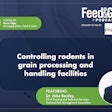Ever find that you would like to have several multiples (e.g., clones) of yourself? No, not as your children, but as your employees at work: little mini-me’s. You might think this would make your job easier because everyone would think, act, have the same abilities as you and be as motivated and engaged as you are, and even better — you would understand the methods most effective for engaging and motivating these mini-me (mini-you) employees. As a manager and leader in your feed and grain business, one of the most important aspects of your job is motivating and engaging your employees. It is extremely useful for your business to understand and effectively implement a process of engaging your employees.
Academic literature defines employee engagement as “an employee’s involvement with, commitment to, and satisfaction with work.” In our business of education we deal not only with engaging employees but also engaging our students. Believe us, the workplace and the classroom are both more pleasant and productive venues when participants are excited about being there and are involved in productive activities.
But, isn’t employee engagement just another buzzword? No, not at all.
Research by Gallup Consulting and others find that engaged employees are more productive, more profitable, safer, more customer-focused, and less likely not to leave your company. Gallup uses the ratio of engaged to not-engaged employees in an organization as a macro-level metric of an organization’s health. Results of their research on more than 17 million employees indicate that the ratio of engaged to actively disengaged employees is 10:1 in what they refer to as “world-class” organizations, however, the ratio is 2:1 in what they refer to as “average” organizations. Their research finds differences in profitability, productivity, safety, absenteeism, and turnover between engaged and disengaged workgroups. Further, their results indicate engaged organizations have 3.9 times the growth rate of earnings per share (EPS) compared to organizations with lower engagement in the same industry. Finally, if this is not enough to convince you that having engaged employees is important to your business, $350 billion per year is lost by organizations due to employee disengagement according to a study of 8,000 employees in a cross-section of industries conducted by Profiles International.
All of these results suggest that in order to improve the success of your business, you need more, rather than fewer, actively engaged employees in your current organization. What is an “actively engaged employee” compared to a “disengaged employee?”
Gallup officially defines three types of employees: Engaged, Not-Engaged, and Actively Disengaged as the following: “Engaged employees work with passion and feel a connection to their company. They drive innovation and move the organization forward. Not-engaged employees are essentially ‘checked out.’ They are sleepwalking through their workday, putting time but not energy or passion into their work. Actively disengaged employees are not just unhappy at work; they are busy acting out their unhappiness. Every day these workers undermine what their engaged coworkers accomplish.”
The following addresses additional elements of employee engagement.
Levels of Employee Engagement
While Gallup’s classification system of three types of employees is very useful in general to think about your employees, it is a very broad classification system. You might also find it useful to have a little more specific understanding of your employees.
The previously mentioned study by Profiles International classifies workers in six, rather than three, groups: Detached Contributors, Stalled Optimists, Maverick Contributors, Self-Empowered Innovators, Fair & Square Traditionalists, and Accomplished Contributors. “Detached Contributors” are defined as those who see the value of work for its near-term economic benefit. “Stalled Contributors” view work as a source of livelihood but not currently or not yet as a satisfying priority in their lives. The viewpoint of “Maverick Contributors” is that work is one of the multiple opportunities for change and excitement in their lives. For “Self-Empowered Innovators,” work is about creating something with lasting value. “Fair & Square Traditionalists” view work as being about upward mobility and an upwardly mobile path to success. “Accomplished Contributors” are those people who see work as their opportunity to be a valuable part of a winning team.
Once again, while these classifications may be useful and may especially be a helpful starting point, they are really just that — a starting point. As a manager, you really need to know and understand your employees completely and individually. The better you understand your employees, the more likely you will know how to motivate and engage each of them — you will understand when you need a carrot and when you need a stick… as well as the appropriate size and type of each.
Approaches to Boosting Employee Engagement
There is no one-size-fits-all or universally-best approach for engaging your employees; however, there are several basic approaches that you as a manager should consider. Gerard Seijts and Dan Crim from the Richard Ivey School of Business sum many of the effective approaches into what they refer to as the “Ten C’s” of employee engagement. As you might guess, each primary approach word in their list begins with the letter C (Connect, Contribute, Clarity, Convey, Congratulate, Control, Career, Collaborate, Credibility and Confidence). We share some of their thoughts mixed with some of our own.
Seijts and Crim states employee engagement will directly reflect how an employee feels about his/her relationship with the boss. Hmmm… Do you have an employee who does not seem to be performing at the level you would like? How well do you Connect with this employee? If the employee does not perceive that you value him/her, then they may not perform at a high level; alternatively, they may also seek opportunities elsewhere. The majority of employees also desire to Contribute to the organization, but they also want to know that their contributions are valued and are important. Do you recognize your employees’ contributions, both small and large? Do your employees feel that their contributions matter? The point being made here (which we touch on a bit more below) is to give your employees positive “strokes” when appropriate — recognize them for a job well done in front of their peers, mention them in employee newsletters if you have one, find positive points to cite during evaluations.
Several of Seijts and Crim’s approaches relate directly to your communication skills as a leader. As the leader, you must actively communicate with your employees. In communicating, you should provide Clarity about goals and visions of your business unit, why these are important, and how individuals contribute to and are important to these goals. You must Convey feedback - both positive and constructive — to employees on a regular basis. People need to know what is expected of them, they need to know when they are doing something well and are appreciated — Congratulate them — and they need to know when they can make improvements and when they have made mistakes. However, remember that negative feedback does not have to be presented in a negative manner. Dale Carnegie says, “Any fool can criticize, condemn, and complain, but it takes character and self control to be understanding and forgiving.” You will get better results if you coach them rather than condemn them… carrots are usually perceived much more positively than sticks.
You can also increase employee engagement by avoiding micro-managing your employees; allow your employees to think and act for themselves. Delegate and allow employees to approach new challenges. Give them Control over their jobs. Seek their input in decisions that will impact them in their jobs. Employees respond better to change when they feel they have a valued voice in the discussion. Provide challenges and opportunities for your employees in their Career. If you are successful in implementing these “Cs,” your employees will look at their work with you as a career, rather than just a “job,” and you both benefit. Give your employees opportunities to further their skills, give them the resources to be successful, challenge them and hold them accountable. You will keep them more engaged with this approach. Encourage an environment of teamwork, one in which employees Collaborate with and trust each other. Strong teams that care about each other, that care about the organization and its goals, are engaged and productive.
As a leader you motivate employees and encourage engagement when you as an individual create Credibility and Confidence about yourself and about the organization. People want to work for an organization that they are proud of and when they have a boss they feel good about and trust. If you or the organization are not credible to employees and do not create an environment in which they are confident that you or the organization will make good decisions and will be trustworthy, then that negative perception about you or the organization fosters negative opinion and lower engagement.
Managing In Tough Times with Limited Resources
So, all the approaches we mention in the previous section are great, but what are you to do when your budget is tight? Regardless of your budget and current economic situation, you do not want to overlook recognizing and motivating your employees to keep them engaged and to keep them feeling valued by you and the organization. Your employees, just like you, want to be rewarded, promoted, and recognized. They will become less engaged, and further, may look for other employment if they feel they are not valued by you. Rewarding and recognizing your employees does not always require money. Remember your good communication skills! If you verbally recognize the good work of your employees to show your appreciation for their efforts and to show they are a valued part of the team, this will make them feel valued. Thank and recognize them in front of others also if possible. This communicates to them that not only do you value them, but that you want others in the organization to know that they are valued by you too. Have lunch with your employees or have periodic social activities after work or on the weekend. Remember, you want your group to connect well and to feel cared about. You could even just bring pastries and coffee to the office occasionally.
If your budget is such that you cannot give raises or bonuses, consider other things that your employees value that may not be costly. How flexible are you with them? Would they appreciate some flex time at work? Can you allow them any additional paid vacation days? Even the very small things that you can do as a manager to thank your employees and indicate their importance to you and your team will make a difference.
Your Importance as Manager in Employee Engagement
Throughout the sections of this month’s column, we have presented and discussed several matters about employee engagement and motivation. The one critical component linking all of these matters together is you — the manager. You are the leader of your group, and your group will be a direct reflection of you — your attitude, your behavior, how your treat, communicate with and make other people feel. If you seldom interact with your employees, seldom thank them or recognize good work, or even worse only recognize the accomplishments of some of your employees while brushing off those of others, you are destroying motivation and engagement of some or all members of your organization. If you want to develop a culture and environment of motivation and engagement in your group and organization, then you must be the leader, set the example by doing, and create and nurture this culture of motivation and engagement. Provide encouragement to people when they are stressed, disappointed, unhappy, sad or angry. Sometimes all you even have to do is just take the time to listen to them and this is enough to help them feel better.
Involve others in decisions, ask for their input and seek their ideas — they will feel valued. Recognize good work and fairly reward and recognize achievements; people will feel that they do matter. Praise and thank people for their work; make them feel appreciated and valued. Encourage professional development opportunities. Provide negative feedback in a positive manner and provide it privately rather than publicly. As the manager, everything you do has the potential to either motivate and engage your team or demotivate them. Think carefully about this and your approach to opportunities and problems.
Your employees can be mini-you’s, so pay attention to who you are. Dale Carnegie says, “act enthusiastic, and you will be enthusiastic.” This is true in the classroom, the board room, and in your feed and grain business. If you want to foster a positive environment of motivation and engagement, then be positive, be motivating, be engaging!
Ed. Note: If you would like an additional resource on creating and supporting employee engagement, then “12: The Elements of Great Managing” by Rodd Wagner and James K. Harter may be a book for you to consider.


















